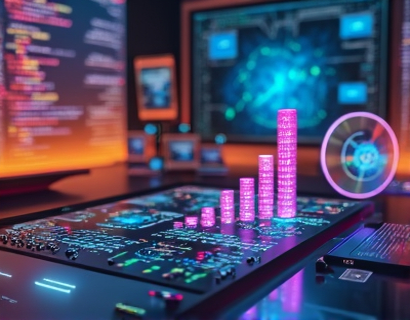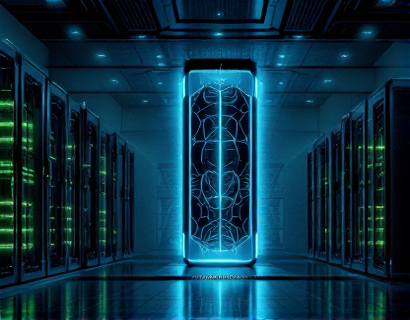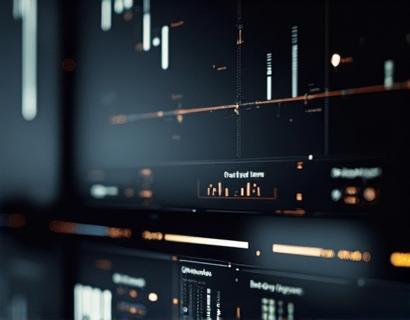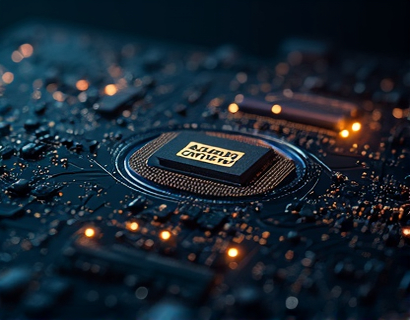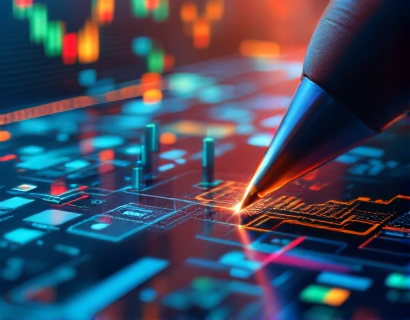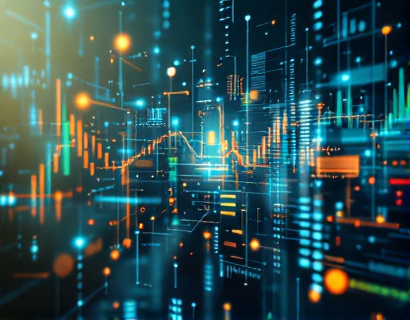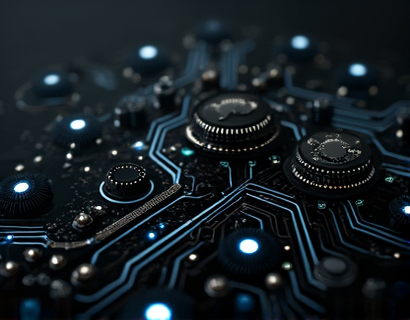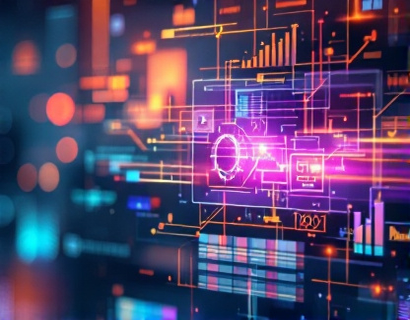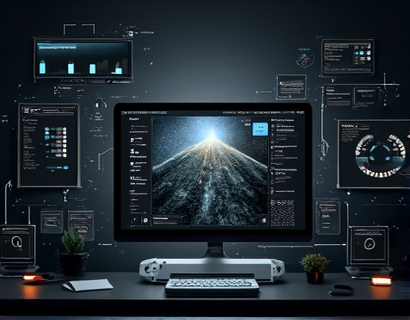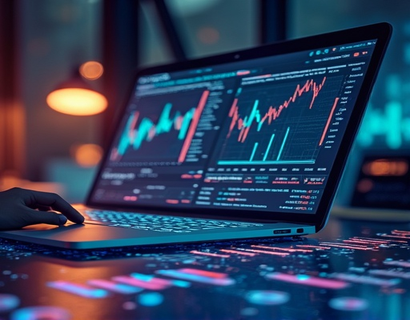Decentralized Innovation: Unleashing Next-Gen Digital Transformation with AI and Crypto Synergy in the Ucosystem
The digital landscape is undergoing a profound transformation, driven by the convergent powers of artificial intelligence (AI) and cryptocurrency. This synergy is giving rise to decentralized innovations that are redefining how we interact with digital solutions and enhancing user engagement in unprecedented ways. The Ucosystem, a term that encapsulates this evolving digital environment, is at the forefront of this change, leveraging the strengths of both AI and crypto to create a more inclusive, secure, and efficient technological future.
The integration of AI and cryptocurrency is not merely a technological curiosity but a strategic necessity in the modern digital economy. AI's ability to process vast amounts of data, learn from patterns, and make intelligent decisions is complemented by crypto's inherent properties of decentralization, transparency, and security. Together, they form a powerful duo that can address some of the most pressing challenges in digital transformation, from data privacy and security to scalability and user empowerment.
Decentralized Applications: The New Frontier
Decentralized applications (dApps) are a cornerstone of the Ucosystem, representing a paradigm shift from traditional centralized applications. Unlike their centralized counterparts, dApps operate on blockchain networks, ensuring that no single entity has control over the entire system. This decentralization not only enhances security by eliminating single points of failure but also promotes transparency and trust among users.
The development of dApps is facilitated by smart contracts, self-executing contracts with the terms directly written into code. These smart contracts automate processes, reduce the need for intermediaries, and ensure that transactions are executed precisely as programmed. This automation and reduction of intermediaries not only lower costs but also increase efficiency and reliability.
One of the most significant advantages of dApps is their ability to foster community-driven innovation. Developers and users can collaborate to build and improve applications, creating a more dynamic and responsive ecosystem. This collaborative approach is particularly beneficial in addressing niche needs and fostering specialized solutions that might be overlooked in a centralized model.
AI-Enhanced User Experiences
AI plays a pivotal role in enhancing the user experience within the Ucosystem. By leveraging machine learning algorithms, dApps can offer personalized services, predictive analytics, and intelligent recommendations. For instance, AI-driven chatbots can provide 24/7 customer support, handling queries and resolving issues in real-time, thereby improving user satisfaction and engagement.
Moreover, AI can analyze user behavior and preferences to tailor content and services to individual needs. This level of personalization not only enhances user experience but also increases the likelihood of user retention and loyalty. In the context of decentralized applications, where user control and privacy are paramount, AI can ensure that personalization is achieved without compromising on security or privacy.
Security and Privacy: A Dual Benefit
Security and privacy are critical concerns in the digital age, and the combination of AI and crypto offers robust solutions. Blockchain's inherent cryptographic techniques ensure that data is secure and tamper-proof, while AI can enhance these protections by detecting and mitigating potential threats in real-time.
AI-powered security systems can monitor network activity, identify anomalies, and respond to threats more swiftly and accurately than traditional methods. This proactive approach to security is essential in a decentralized environment where the absence of a central authority means there is no single entity to rely on for protection.
Privacy is another area where AI and crypto synergize effectively. Blockchain's transparency can sometimes conflict with user privacy, but AI can help strike a balance. Techniques such as zero-knowledge proofs and homomorphic encryption allow for data to be used and analyzed without revealing sensitive information. This ensures that users can benefit from the advantages of decentralized systems without sacrificing their privacy.
Scalability and Efficiency
Scalability remains one of the key challenges for blockchain technology, but the integration of AI is helping to overcome these limitations. AI can optimize blockchain operations by predicting network congestion, adjusting resource allocation, and improving transaction processing speeds. This not only enhances the performance of dApps but also makes them more viable for widespread adoption.
Furthermore, AI can streamline the development and deployment of smart contracts. By automating the identification of potential vulnerabilities and suggesting optimizations, AI reduces the risk of errors and ensures that contracts are executed efficiently. This efficiency is crucial for the seamless functioning of decentralized applications and the overall Ucosystem.
Economic Incentives and Tokenomics
The economic incentives provided by cryptocurrency are a driving force behind the adoption of decentralized applications. Tokens and cryptocurrencies serve as utility tokens, governance tokens, or rewards for contributing to the ecosystem. These economic mechanisms align the interests of users and developers, fostering a collaborative and vibrant community.
Tokenomics, the study of token economics, plays a vital role in designing sustainable and equitable incentive structures. By carefully balancing supply, distribution, and utility, developers can create token economies that promote active participation and long-term engagement. This approach not only enhances user motivation but also contributes to the overall health and resilience of the Ucosystem.
Case Studies: Real-World Applications
Several real-world applications demonstrate the transformative potential of AI and crypto synergy in the Ucosystem. For example, decentralized finance (DeFi) platforms leverage AI to offer sophisticated financial services such as lending, borrowing, and trading, all while maintaining transparency and security. These platforms empower users to manage their finances without relying on traditional financial institutions.
Another notable application is in the realm of supply chain management. AI-driven dApps can track products from origin to destination, ensuring authenticity and compliance with regulations. Blockchain's immutable ledger provides a transparent and tamper-proof record, while AI ensures efficient and accurate tracking and verification processes.
Healthcare is yet another sector benefiting from this synergy. AI-powered dApps can analyze medical data, assist in diagnosis, and personalize treatment plans. Blockchain ensures that patient data is secure and privacy-preserving, while smart contracts can automate insurance claims and reimbursements, streamlining the entire healthcare process.
Challenges and Future Prospects
Despite the numerous advantages, the integration of AI and crypto in the Ucosystem is not without challenges. Regulatory uncertainties, technical complexities, and user adoption barriers are some of the hurdles that need to be addressed. However, as the technology matures and more successful use cases emerge, these challenges are likely to diminish.
The future of the Ucosystem looks promising, with ongoing research and development pushing the boundaries of what is possible. The convergence of AI and crypto is set to drive further innovations, from enhanced virtual reality experiences to more sophisticated autonomous systems. As the digital landscape continues to evolve, the synergy between these technologies will remain a key driver of progress and transformation.
In conclusion, the synergy between AI and cryptocurrency is revolutionizing the digital world, giving rise to decentralized applications that enhance user engagement and drive innovation. The Ucosystem, at the heart of this revolution, is poised to redefine the future of technology, offering a more secure, efficient, and user-centric digital experience.






